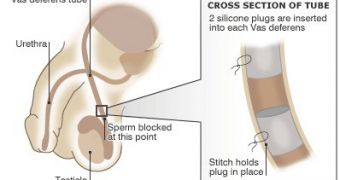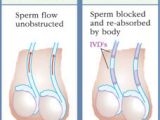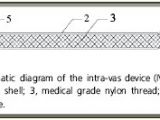It's so easy to leave the contraception responsibility to the woman... Still, lately, the scientific research has been providing ideas and concepts for so many products designed for males... Including a male contraceptive device: The Intra Vas Device (IVD), tiny implants that stop the flow of seminal liquid.
There are two IVD types tested right now. The American variant developed by the Shepherd Medical Company is made of a pair of silicone plugs, while the Chinese method, developed by the Foshan Medical Company, uses a urethane tube lined with a minute nylon sieve.
The American type would come in various sizes, and with a patented insertion tool, being in the Phase I clinical trial in four American centers (St. Paul and St. Cloud, MN; Shreveport, LA; and Tampa, FL). Shepherd Medical forecasts an overall cost for the device and the insertion procedure of less than $1,000, and by 2010 it could be available in Europe, Canada, and the US.
The Chinese type is already out of Phase II clinical trials, which compared the IVD to no-scalpel vasectomy (NSV), coming with positive results.
The American IVDs, made of two sets of flexible silicone plugs (less than 2.5 cm or one inch long), are inserted into the vas deferens, the tubes transporting the sperm from the testes to the urethra. The device fits the width of each subject's vas deferens, occluding the tube's opening, without stretching it. Two plugs are placed in the same vas with a small distance between them. Sperm passing the first plug is stopped by the second.
The plugs are attached through small sutures to the vas' wall, so that they won't move and are not felt by the patient. Unlike a vasectomy, IVD keep the vas deferens intact.
The Chinese flexible urethane tube has one closed end. The nylon mesh functions as a sieve to capture sperm. Just one device is inserted in each vas deferens. A tiny hole near the tube's closed tip permits the fluid to pass in the vas deferens, while retaining the sperm cells. This IVD is tied by two loops around the outside of the vas, one at the front and one at the back, for keeping it still, while the vas deferens remains complete. Because the fluid crosses to the vas, this device impedes the pressure increase on the epididymis, as in closed-ended vasectomy.
Doctors effectuating vasectomies can apply IVD insertion too. Through a no-scalpel procedure, the doctor cuts a tiny opening in the wall of the vas, inserting the plugs. The tool stretches the plugs lengthwise, turning them for the moment narrower than the vas. When released, the plugs grow back to their full size, occluding the vas. After that, the IVDs are attached to the vas.
The operation, performed under local anesthetic, lasts less than 20 minutes, but up to 3 months are required for ensuring real contraception effect through sperm count. Pilot trials with the American IVD detected azoospermia (no sperms) in 90 % of the subjects and significant oligozoospermia (scarce sperms) in 10 % of the subjects within 2-3 months. Better results could be provided by the current design of IVDs matching each man's vas.
In Chinese trials, subjects were advised to keep using another contraception method for 3 months following the insertion. The Phase II trial came with 100% effective contraception 3 months after the insertion, similarly to no-scalpel vasectomy, but with lower side effects.
10 % of the subjects felt pain or tenderness in the cases of IVD surgery, compared to 20% for NSV, and just 3% developed granulomas (painful tissue nodules), compared to 10% in the NSV cases.
Chinese IVDs did not produce congestive epididymitis (longer-term swelling and pain in the epididymis), which can reach 5% in NSV cases. For the American model, side effects have not been published yet, but because it works like closed-ended vasectomy, congestive epididymitis could appear.
Chinese IVD reversal has scored favorably compared to vasectomy reversal (vasovasostomy). The plugs can be easily removed through a small incision. The IVD reversal would be a fast procedure evaluated at less than $1,000, while a vasovasostomy means $5,000-12,000 and is done in 3-4 hours of microsurgery.
Repeated IVDs are more viable than multiple vasectomies, as they do not harm the vas deferens tissue, and by being less invasive, IVD's reversal could rate more than vasovasostomy. Like in vasovasostomy, IVD reversal's result could also be influenced by the time elapsed from the insertion.
Reversal of the American model made in primates scored positively: effectuated 7 months after implantation, full fertility (sperm count and motility) was restored in males within one month.

 14 DAY TRIAL //
14 DAY TRIAL // 

